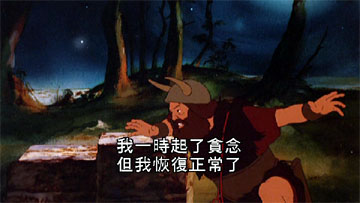|
More Essays | Chinese Songs | Chinese Riddles | Help | CantoDict | Links | Forums |
Learning Cantonese via DVD |
|
DVD's are a fine example of consumer technology making a leap forward. For the same price as a video cassette, you can now buy the same film on DVD with some or all of the following benefits:
However, as students of Cantonese, the features of DVD that should interest us most are:

"A madness took me - but it has passed!"*
These two features mean in is possible to watch a film in Cantonese with English subtitles and see how many phrases you understand. You can also listen to the film in English with Chinese subtitles and use your pause button to see if you recognise any of the characters. These methods are by no means foolproof as the translations can vary widely to what is actually being said. However, this website is assuming that you are a beginner and at this level it is only reasonable to expect to recognise a few words or phrases. Even the process of listening to Cantonese being spoken fast and fluently can be incredibly useful and it is genuinely encouraging when you understand a few words from a sentence being spoken at what seems like 300 words per minute! In the same way, if you try and read the Chinese subtitles you should be able to recognise single characters and some sentences will definitely begin to make sense when you can hear the english translation. Here are a few tips on using DVD's to help you learn.

"Sauron is moving at last!"*
|
|
DVD
images used from the excellent Lord of the Rings animated
film by Ralph Bakshi. Incidentally, another Chinese/Lord of the Rings article may be found here. Sponsored Link: Movie Death Database, including entertaining deaths by Bruce Lee! |